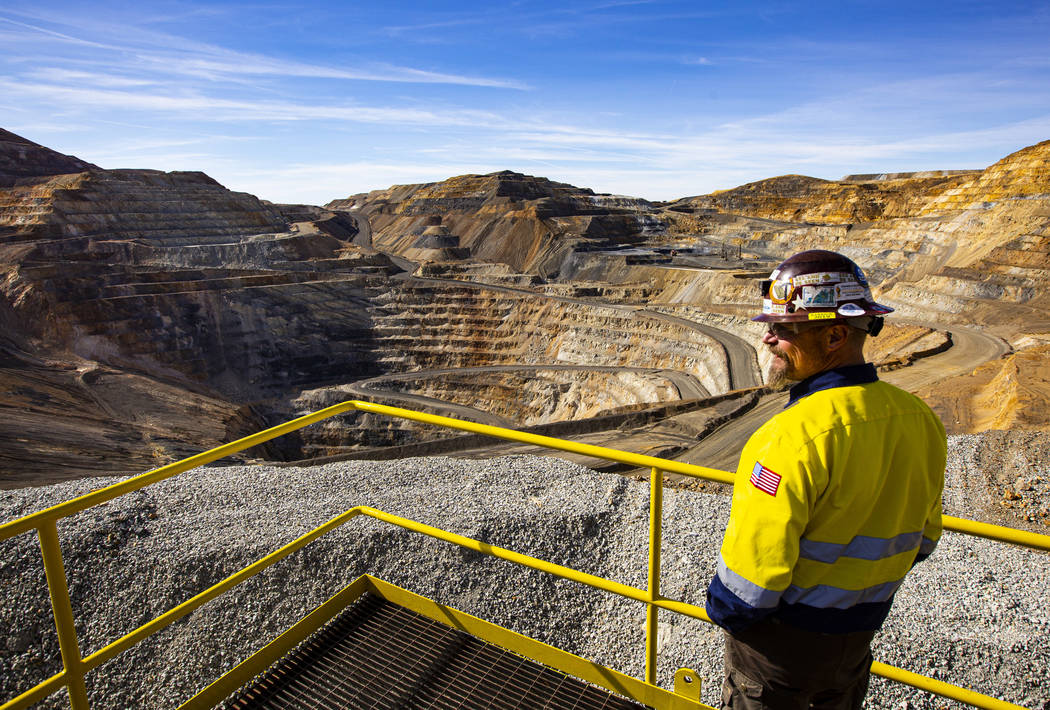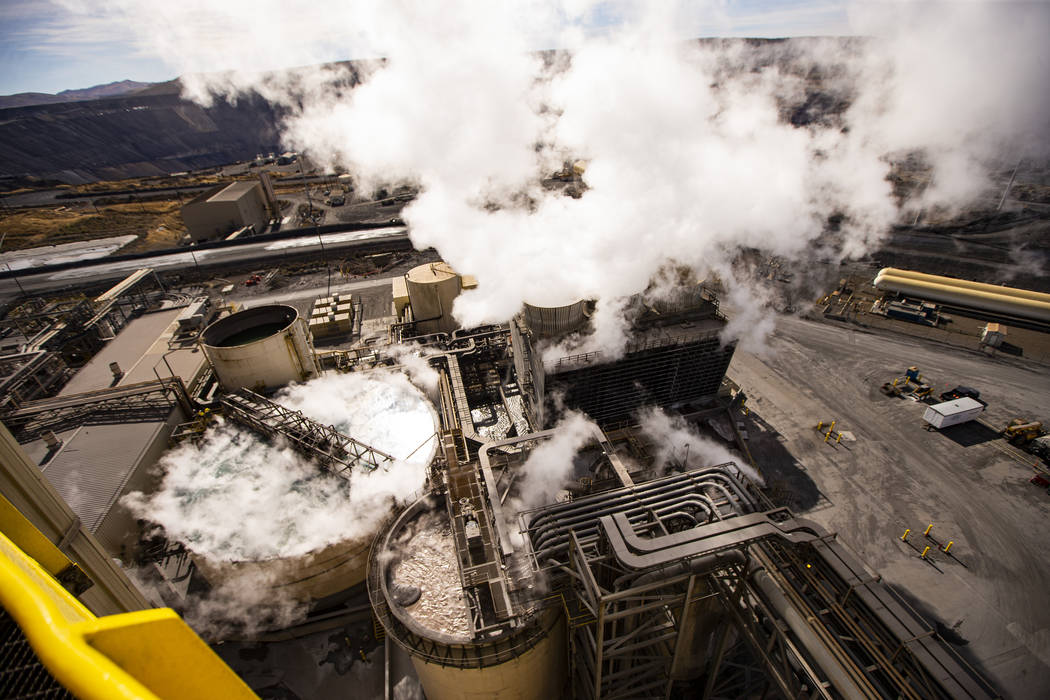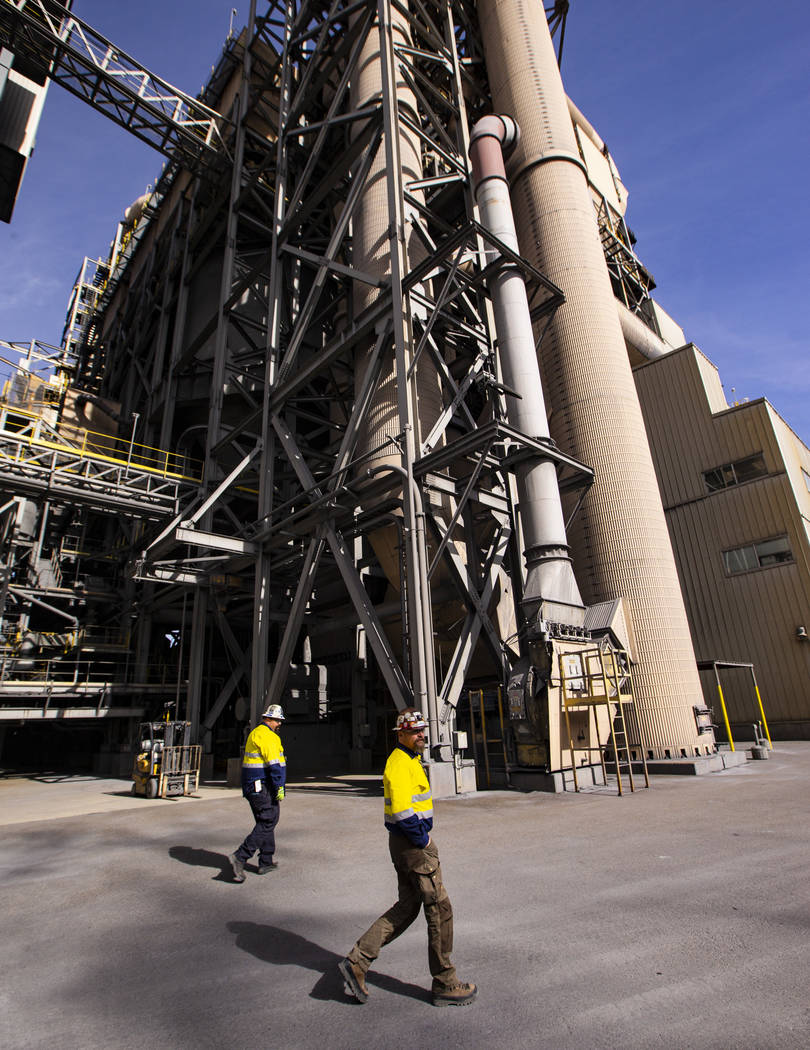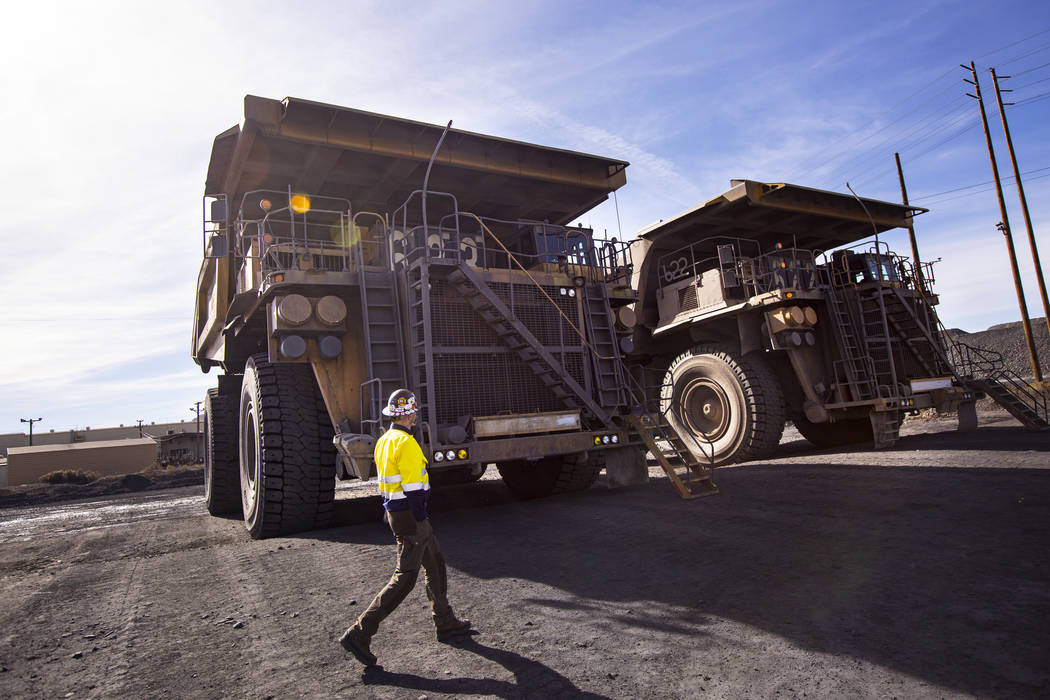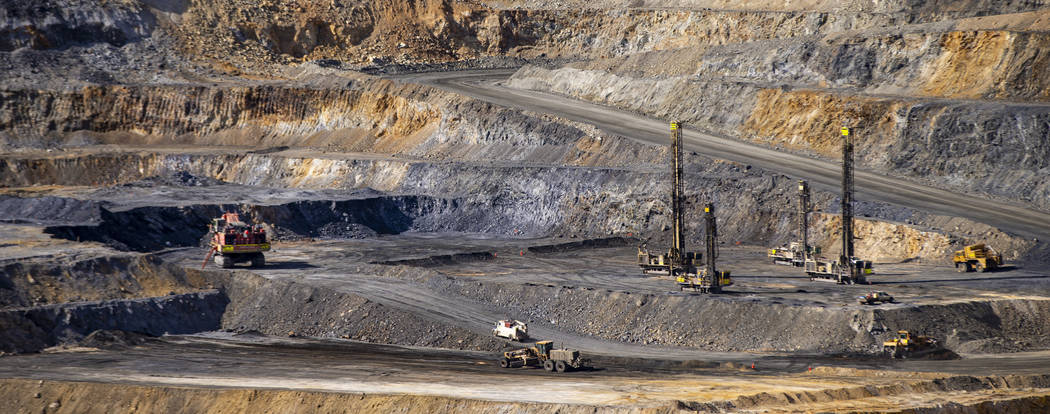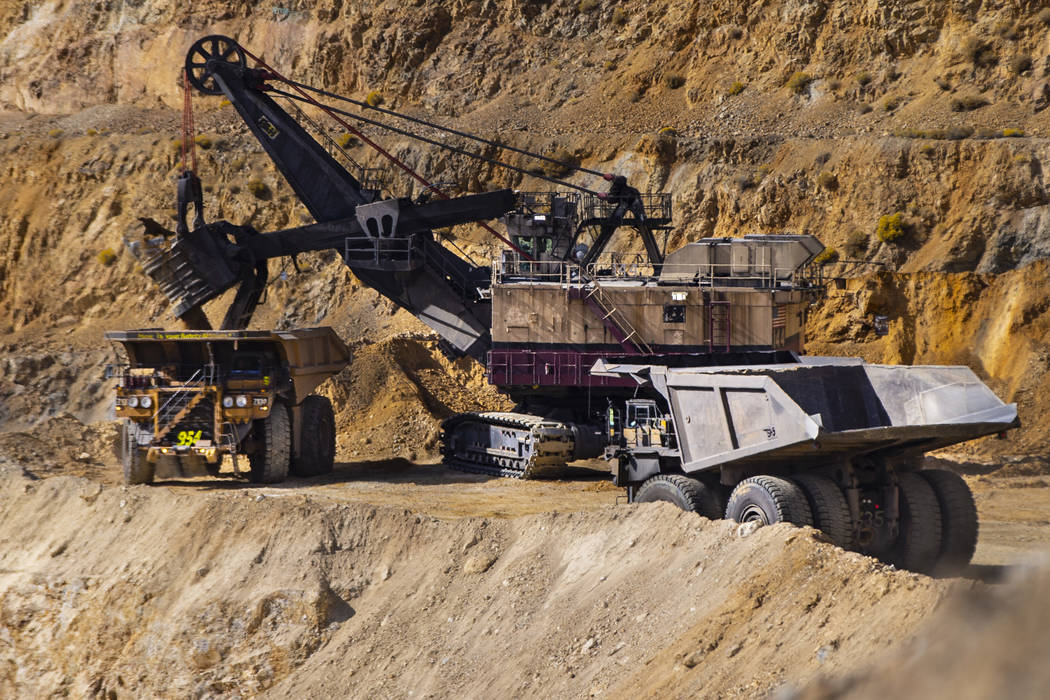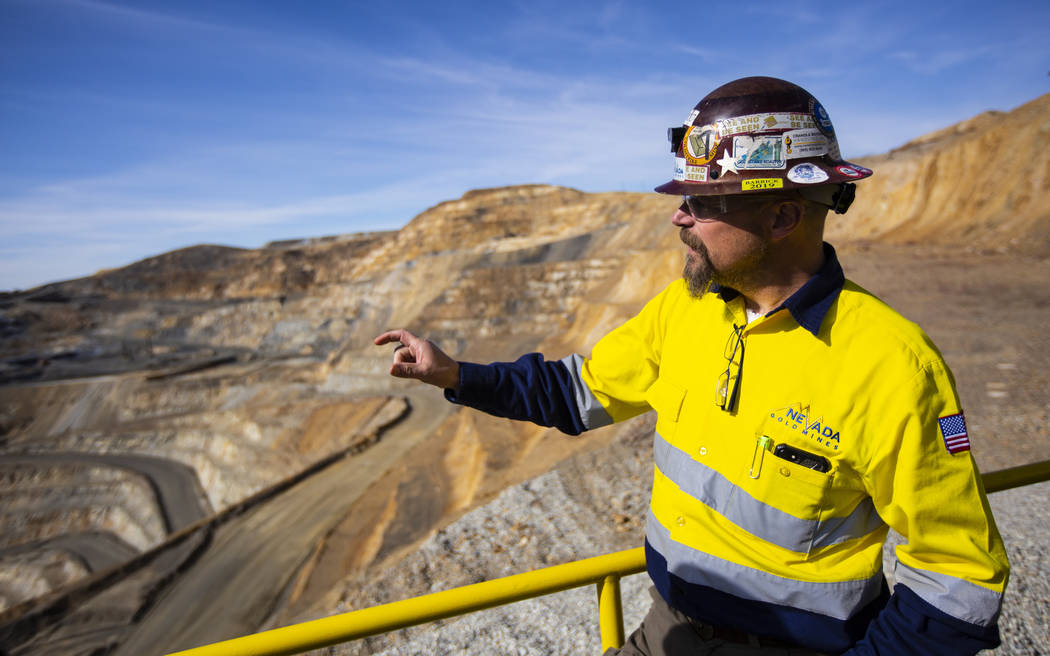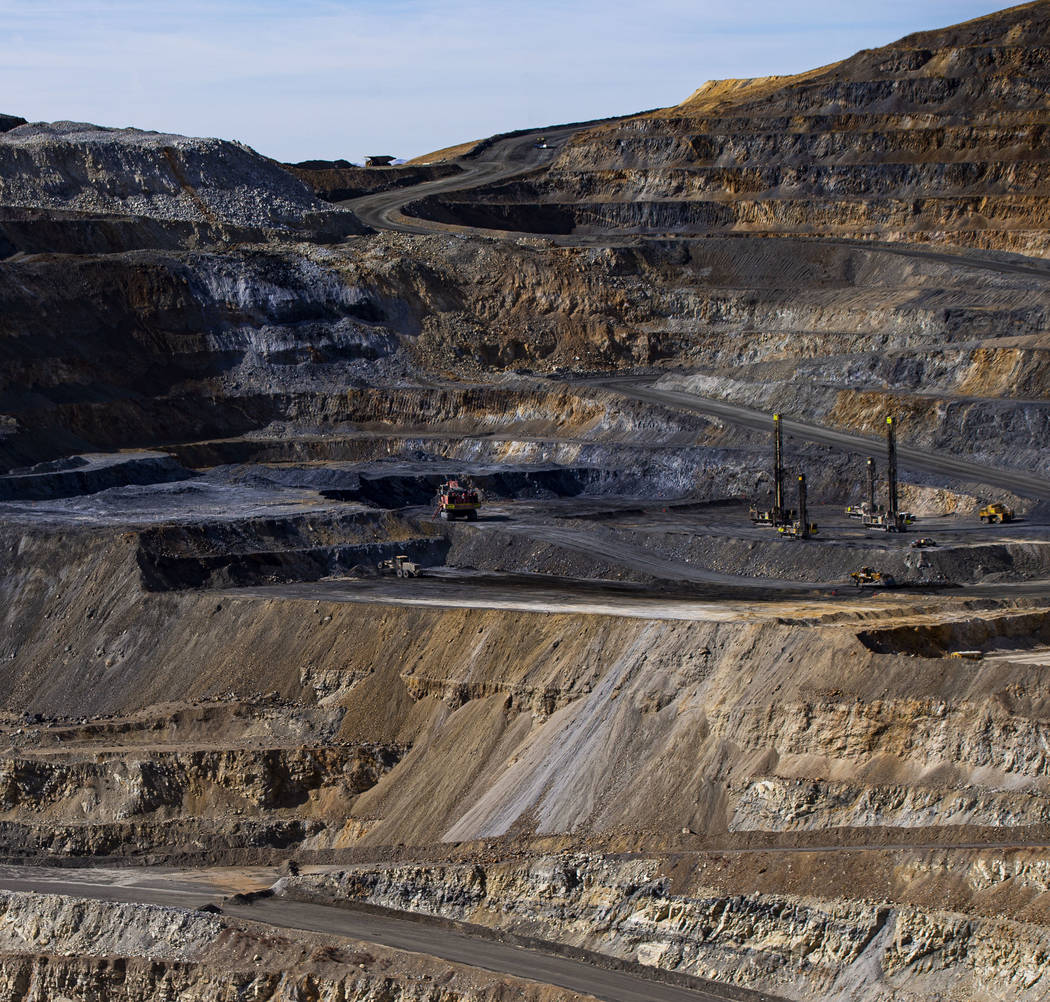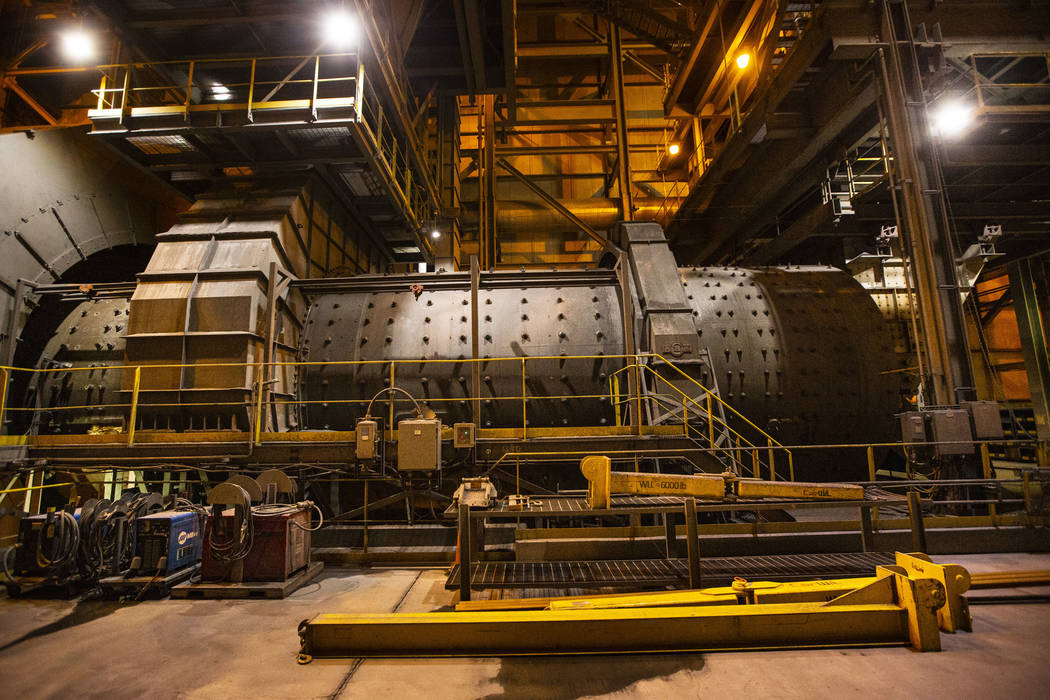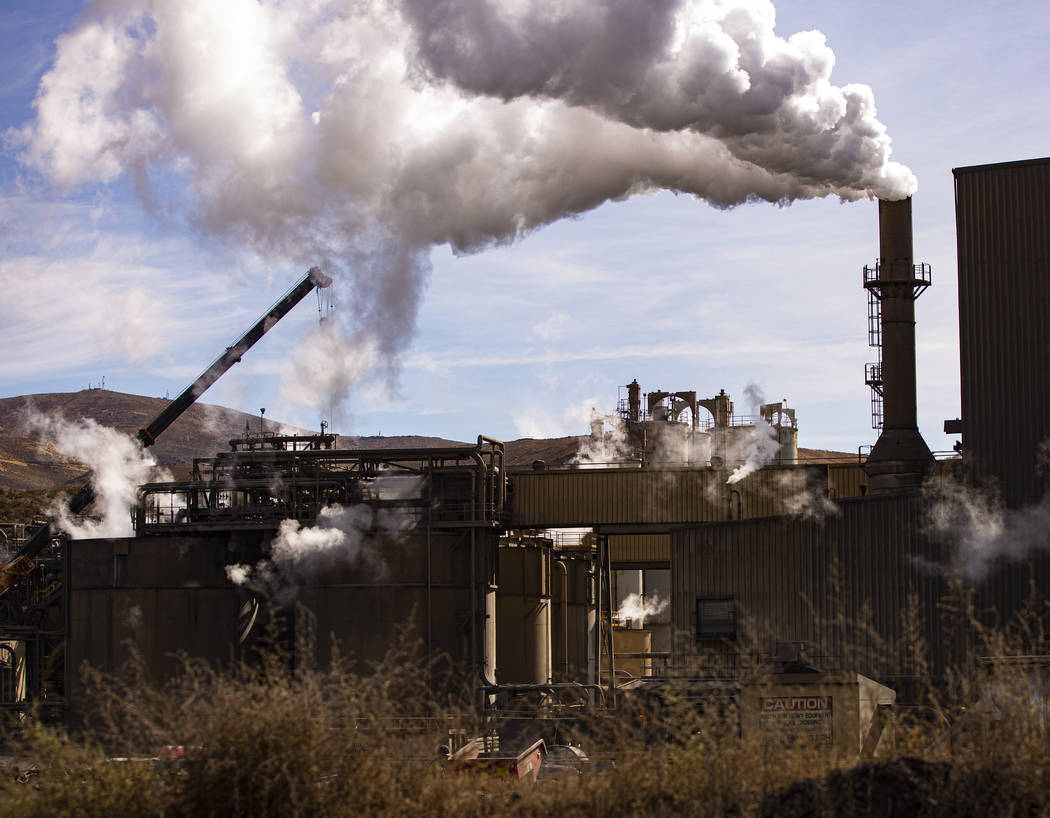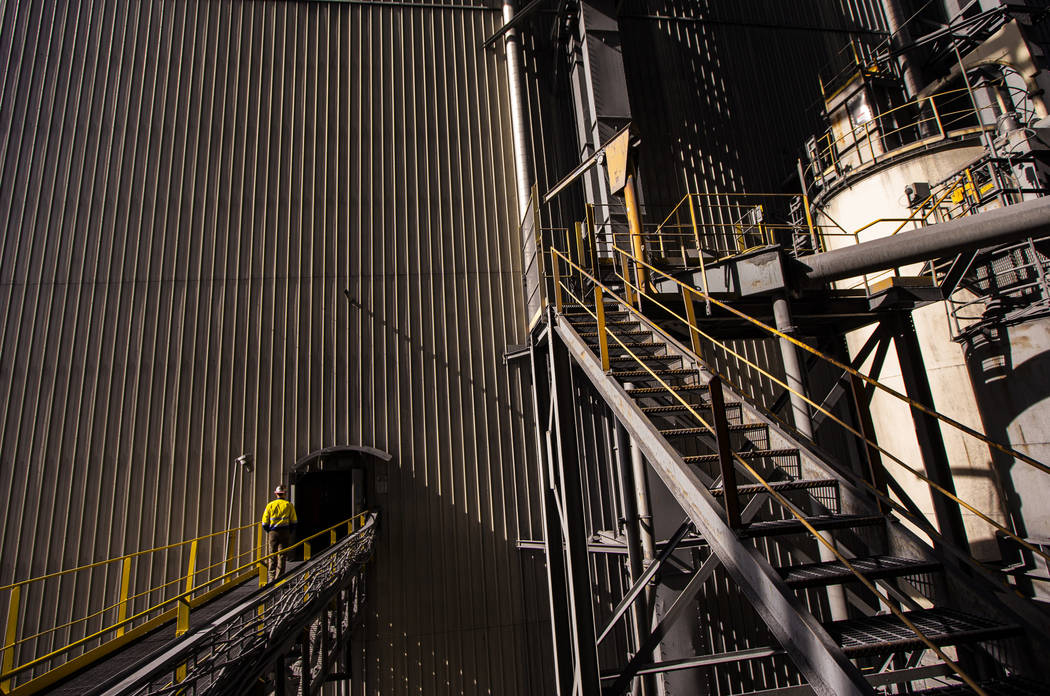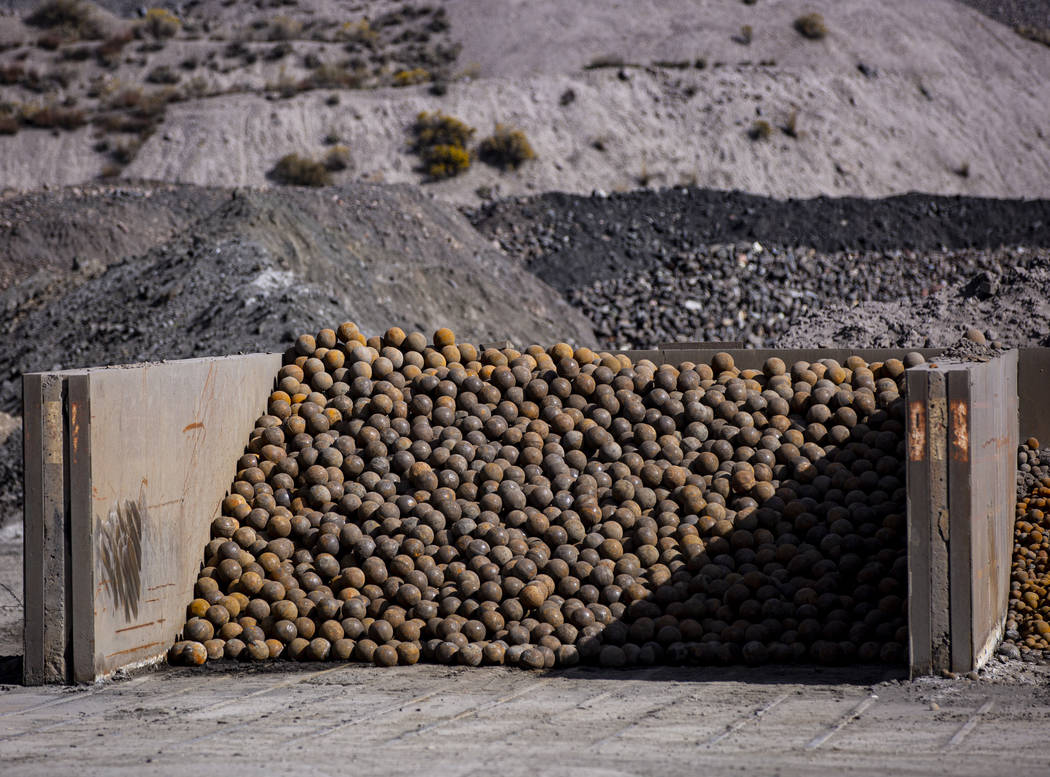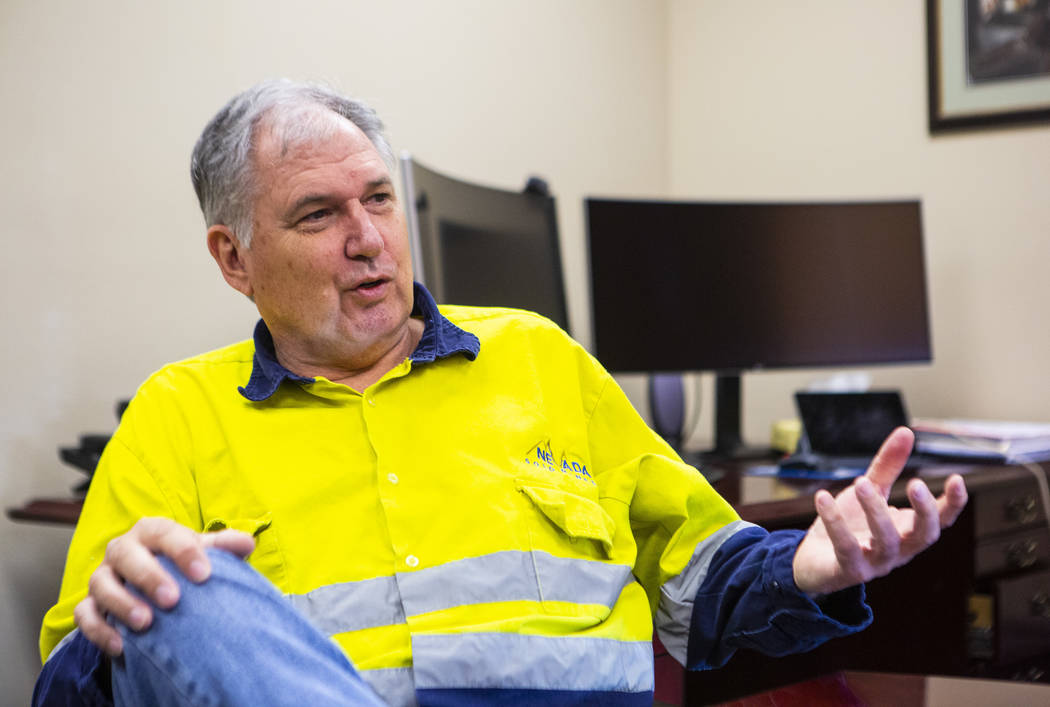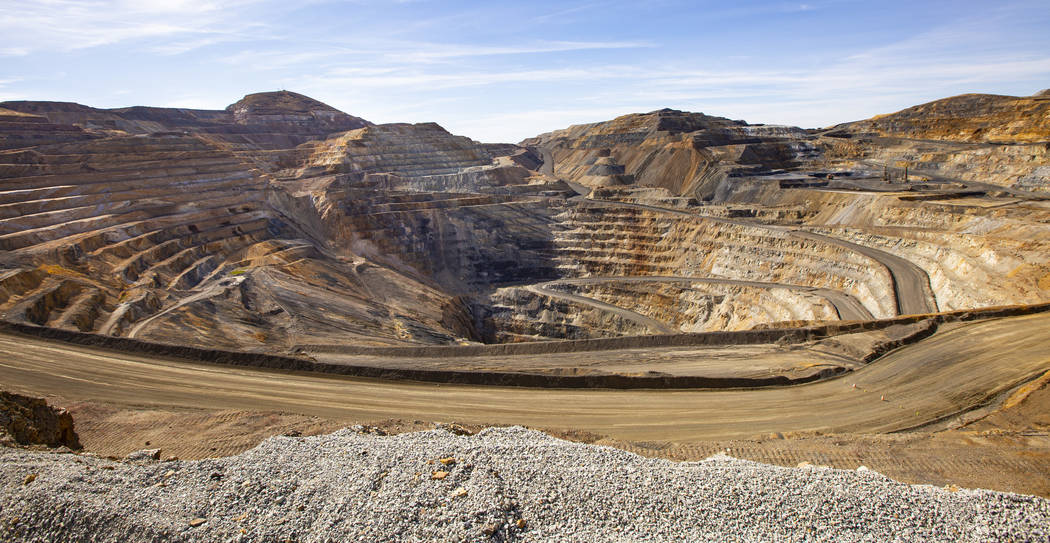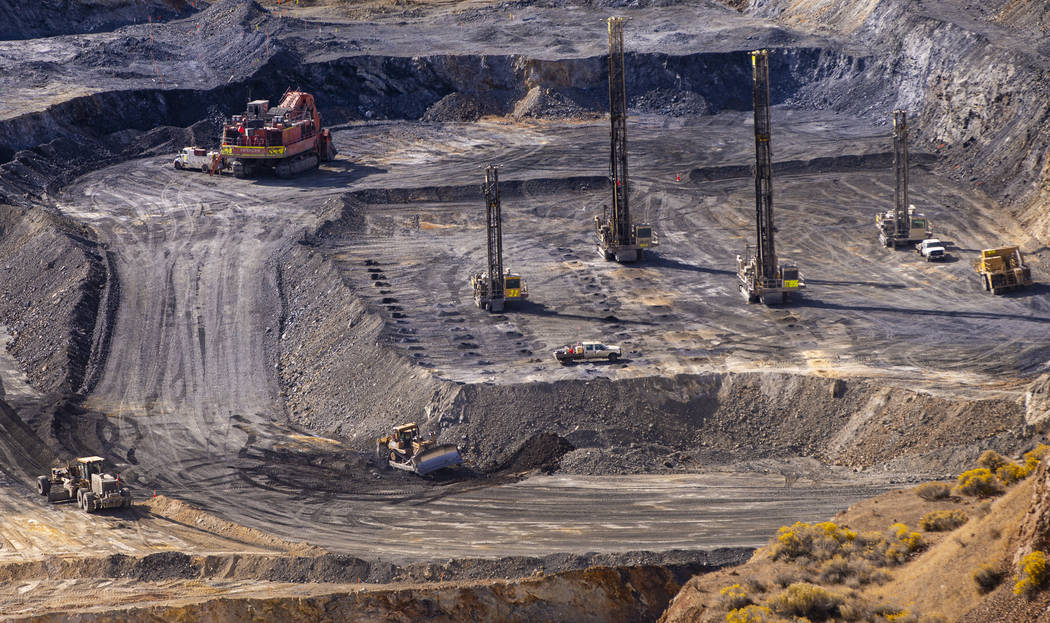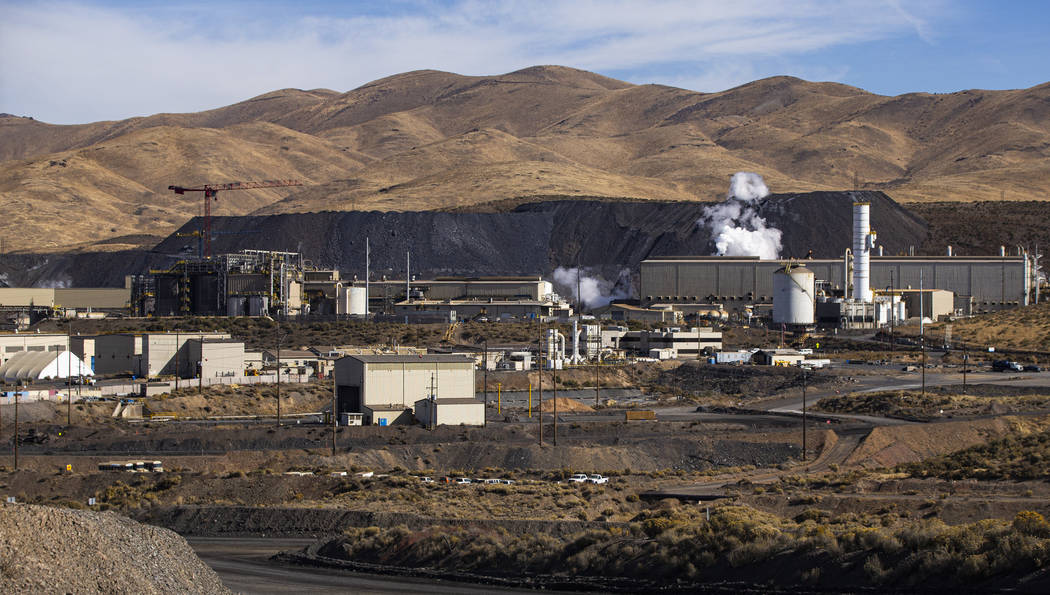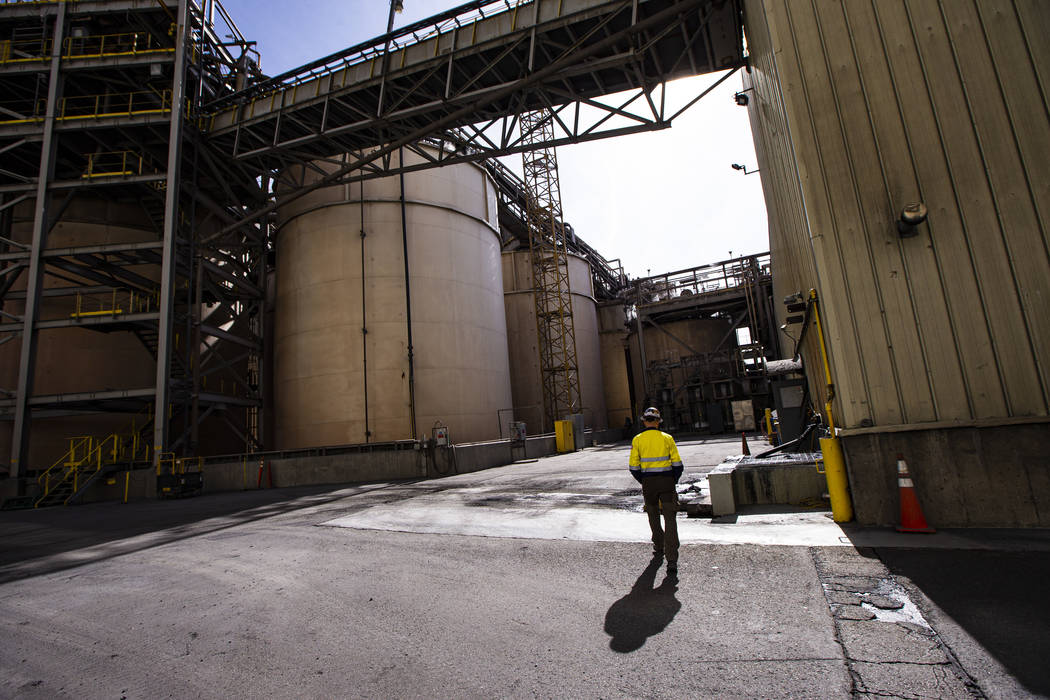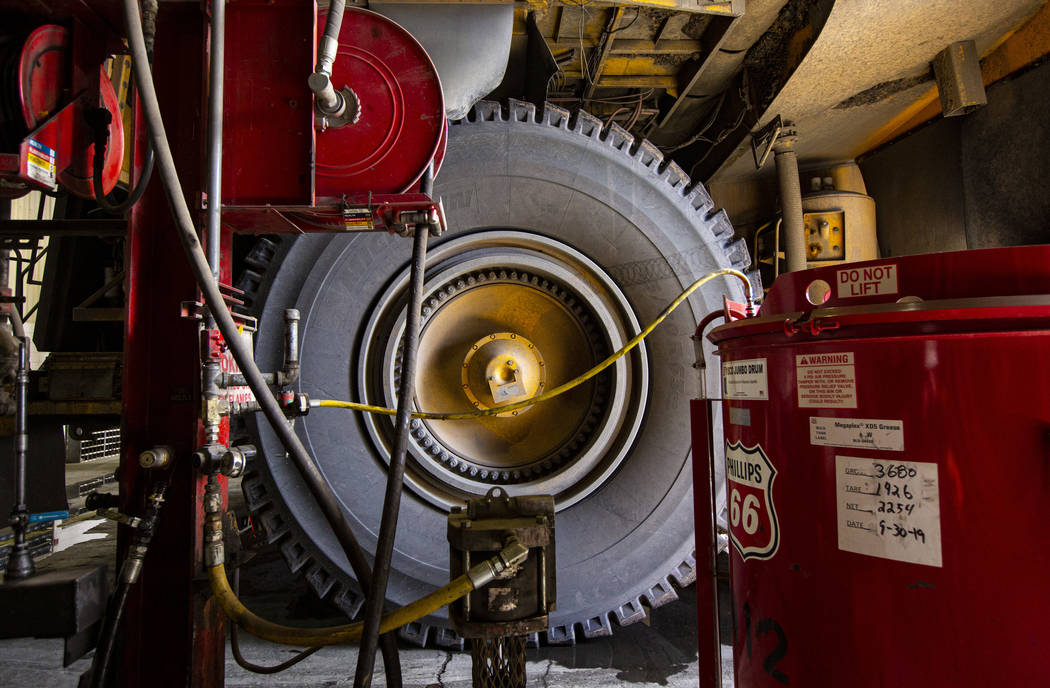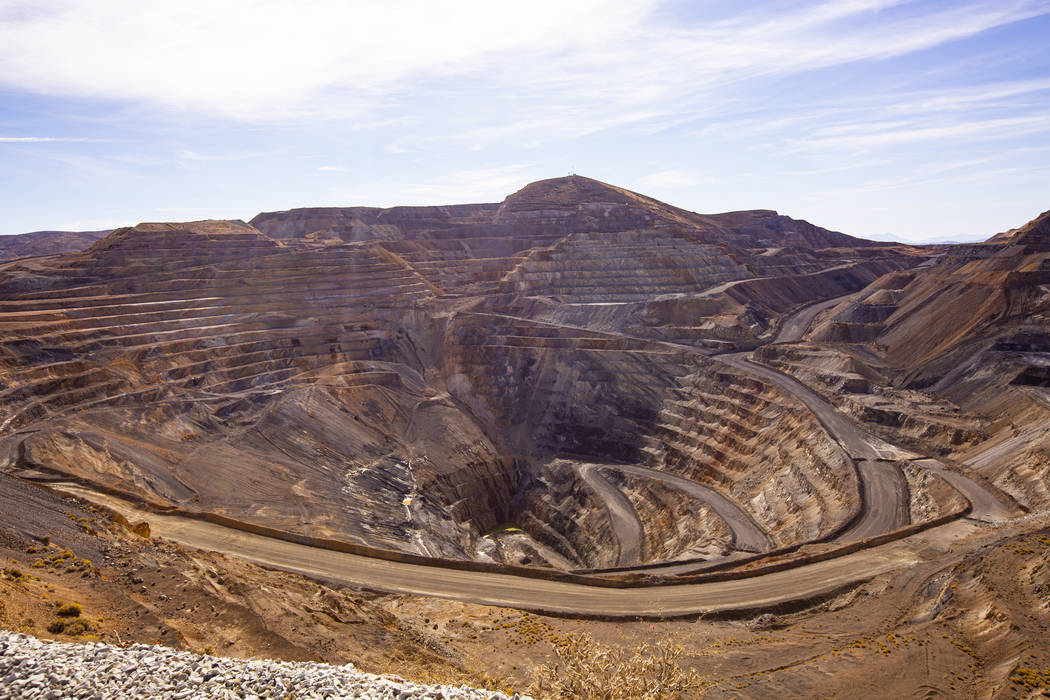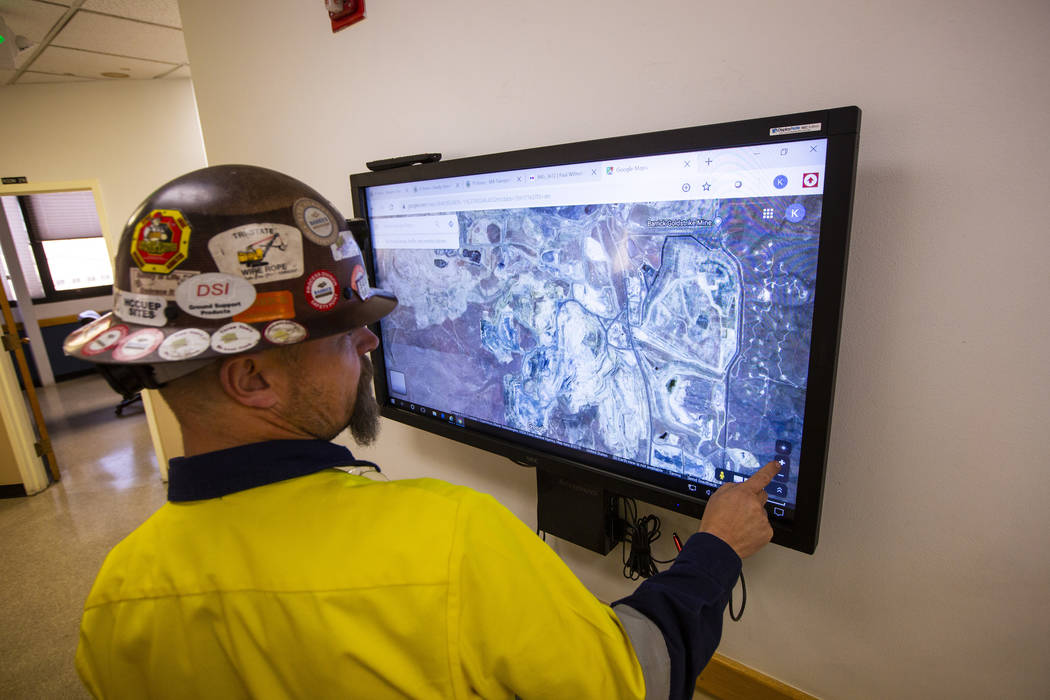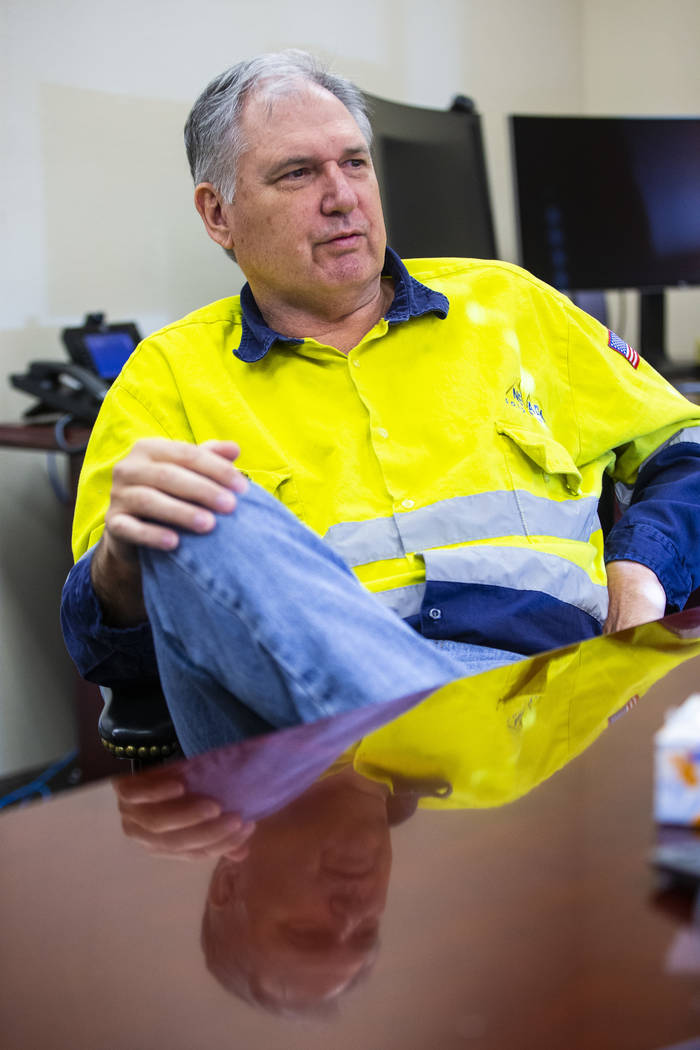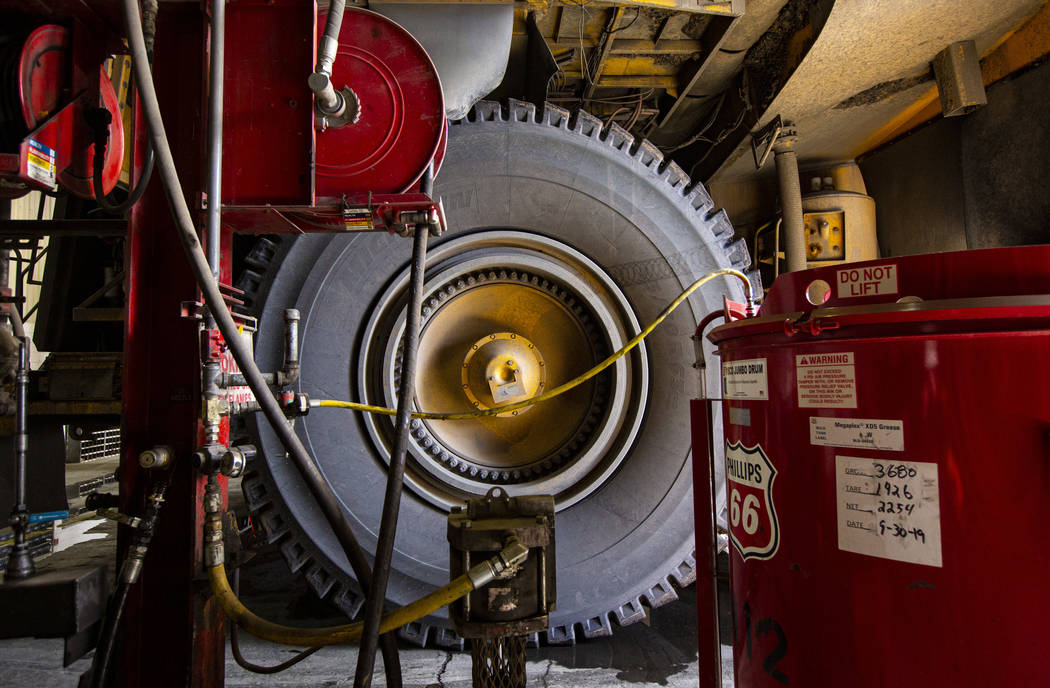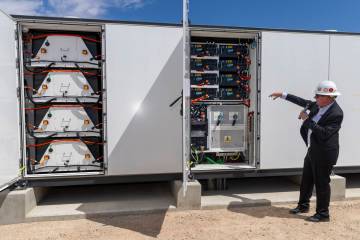2 new major finds may extend Nevada’s gold boom for years
ELKO — In a state where gold mining dates to the 1830s, two major new deposits could keep the Silver State among the world’s leaders in gold production for decades to come.
The first deposit, known as Goldrush, will start producing in 2021, and the adjacent Fourmile will follow sometime after 2025. They are located roughly 20 miles west of Elko, and each could produce 5 million ounces of gold over a decade.
The value of those finds will fluctuate depending on the market price of gold and the difficulty and cost of recovering it. But a back-of-the-napkin calculation, with gold at its current value of more than $1,500 per ounce, could set the 10-year value of each new find at around $7.5 billion, with a potential profit of $3 billion for mining companies.
Given those numbers, one might imagine mining executives celebrating these discoveries with toasts and shouts of “Eureka!” But identifying new deposits is just part of the business.
“We’re gold mining people. We don’t get that excited,” said Greg Walker, who leads a new joint venture launched by two giant mining companies that will develop the finds. “It’s not like an oil field, where you’re drilling down and suddenly oil gushes out and you all get excited.”
If there is a “Eureka!” moment in gold exploration, it’s when lab results come back with the right numbers, Walker said. For the Elko operation, that came in 2015, when testing confirmed his team’s predictions.
“We’re excited, but we’re not champagne-popping excited,” Walker said. “We’re just really excited as an industry and a business, because this is going to be a really big deposit. We have the belief that it’s as big as any other mine that we’ve found in this area, so that’s pretty significant.”
He added: “It’s not a stretch to say that we’ll (still) be here in 30 to 40 years, and if we keep finding deposits like Fourmile, we’ll be here for longer than that.”
‘A healthy industry’
Nevada is home to one of six major gold producing areas in the world. The new discoveries come well into what is considered the state’s fourth gold boom, now decades old.
“It is a healthy industry in Nevada,” said Dana Bennett, executive director of the Nevada Mining Association. “There’s many indications to be optimistic about the future.”
Though mining operations occupy a minuscule portion of the state, the industry’s contributions and metrics are outsized.
Consider these nuggets:
■ Gold is the state’s top overseas export by value, accounting for $4.9 billion, or 44 percent, of the state’s $11 billion of exports in 2018. A year earlier, gold accounted for more than half the total. The top destinations are Switzerland and India, where Nevada-mined gold is refined.
■ The state produces more than 80 percent of the gold mined annually in the United States. If it were a separate country, Nevada would be the world’s fifth-largest producer, behind China, Australia, Russia and Canada.
■ Over the past decade, gold production has averaged about 5.5 million ounces per year. The value of that production in 2018 was just over $7 billion, representing 84 percent of all mining production in the state.
Gold mining in Nevada didn’t really take off until the price of gold started to climb in the 1970s. The gold mined since then in places like the Carlin Trend — a 5-mile-by-40-mile belt named for the Elko County town it runs beneath — is typically invisible to the naked eye in the ore where it resides. Microscopic particles of gold are recovered from the ore by various methods.
Prospecting for the new deposits started in 2014. A single exploratory drill hole can cost $250,000 to $1 million, so before a drill goes in the ground, geologists conduct magnetic surveys, look for telltale surface rock outcroppings and study the below-ground geologic layers.
Based on their findings, they map out a drilling plan — in this case, 11 holes. The first 10 came up short. The last hit was what the team was hoping and expecting to find.
“It’s more around the geology than actually the gold result,” Walker said. “It’s all around what happens in the ground, and that’s why this area is so prospective. There’s a lot of really good geology here, lots of volcanic action, lots of foldings and faults of the earth’s crust, which gives us pathways for the gold to come up.”
Two giants join forces
The world’s two largest gold mining companies, No. 1 Barrick Gold Corp. and No. 2 Newmont Corp., account for more than three-quarters of Nevada’s annual gold production. In July, they merged most of their Nevada assets into a joint venture, Nevada Gold Mines Corp., announcing that the new company would “rank as the largest global gold producing complex by a wide margin.” Walker was named executive managing director.
Toronto-based Barrick and Colorado-based Newmont have long been competitive in Nevada. They have operated more or less side by side in the state for more than three decades, their ore trucks driving miles past one another to get to their separate refining facilities.
The new venture’s assets comprise eight mine complexes and associated processing facilities that produced about 4.1 million ounces of gold in 2018.
In all, there are now three so-called Tier One gold assets in the joint venture’s portfolio. The combined Goldrush-Fourmile complex, expected to be one of the biggest projects in the world, would become the fourth.
“To find another Tier One in the middle of Nevada in the 2020s, it’s just gonna be mind-blowing to do that,” Walker said at the Elko office in the fall.
The joint venture, which employs about 7,000, hopes combining operations will save $500 million annually starting in 2020. It cut about 130 positions when it formed, and 70 people lost their jobs.
“The whole joint venture makes good business sense,” said Walker, a straight-talking Australian with 40 years in the industry, the last 17 with Barrick.
“Why wasn’t it done 20 years ago? There’s probably some personalities and some egos — there’s always going to be,” he said.
Historically speaking, the timing for the merger makes sense, said Rich Perry, administrator for the state Division of Minerals and a former Newmont vice president. In each of the previous precious-metals booms, mining interests eventually consolidated as extraction became more difficult and the quality of the ore degraded.
“This is no different,” Perry said. “You’re consolidating because you’re getting into lower-grade ores, and you need to consolidate to reduce your operating costs.”
Consolidation will keep gold mining in Nevada going longer, he said. “Because if you can drop those operating costs, all of a sudden what was waste becomes ore.”
Environmental concerns, new reserves
Shoddy 19th-century practices saw the Carson River polluted by mine tailings. Mercury used in milling and extraction also ended up there, and a 130-mile stretch of the river across five counties remains a federal Superfund site.
Many of the lingering pollution problems from mining arise from such legacy issues. But in 2015, Barrick and Newmont, without admitting violations, agreed to pay $591,000 in fines to the Environmental Protection Agency to settle allegations of excessive mercury releases at two open-pit mines near Carlin dating to 2007.
Since 1989, Nevada mine operators have been required to post reclamation bonds and submit plans before the start of operations that detail how the land they mine will be restored. There are currently $3 billion in reclamation bonds that aim to protect against a mining company failing to meet its obligations.
“In mining, before you can open, you have to explain to the government, in a process that is subject to public comment, how you’re going to close,” Bennett said. “And in anticipation of your closure, you are required to put up a bond in case you wander off and don’t pay for that closure.”
Walker said mine companies work with American Indian tribes in culturally sensitive areas and where artifacts are discovered. They also work with regulators on protecting the environment and vulnerable species.
Things are different today than they were 40 years ago, when Walker started in mining. “We don’t even look at an operation if you can’t politically and socially operate it,” he said.
“We’re all morally interested in making sure the community and the environment’s looked after,” he added. “It’s a business case. You destroy your community or destroy your environment, you can’t operate. You don’t have a license to operate if you’re irresponsible.”
Contact Bill Dentzer at bdentzer@reviewjournal.com or 775-461-0661. Follow @DentzerNews on Twitter.
Related
Mining has outsize impact on rural Nevada counties



